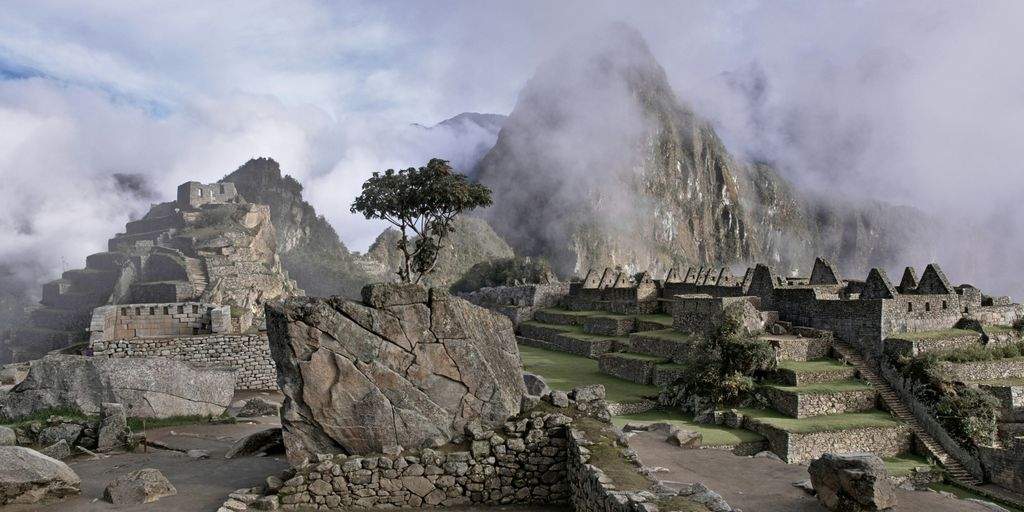
Terraces are fascinating structures that appear in various forms across architecture, agriculture, geology, and urban planning. They serve multiple purposes, from enhancing the aesthetic appeal of buildings to preventing soil erosion in farming. This article will explore the diverse roles terraces play in different fields and their significance in our lives, shedding light on their historical context and environmental implications.
Key Takeaways
- Terraces enhance architectural designs and provide functional outdoor spaces.
- In agriculture, terracing helps prevent soil erosion and increases crop yields.
- Geologically, river terraces are important indicators of past environmental changes.
- Urban planning incorporates terraces for aesthetic and recreational purposes.
- Terraces play a vital role in managing water resources and supporting biodiversity.
Understanding Architectural Terraces

Design Principles of Terraces
When you think of terraces in architecture, it’s more than just a flat space outside a building. It’s about creating a connection between the indoors and outdoors. The design hinges on usability, aesthetics, and how well it integrates with the building’s overall structure. You’ve got to consider things like:
- Accessibility: How easily can people get to and use the terrace?
- Materials: What materials will hold up against the weather and complement the building’s style?
- Layout: How is the space divided and arranged for different activities?
A well-designed terrace feels like a natural extension of the interior, blurring the lines between inside and out. It should be functional, beautiful, and enhance the living experience.
Terrace Gardens and Landscaping
Terraces offer a fantastic opportunity to bring nature closer to home, especially in urban environments. Turning a terrace into a garden involves careful planning and consideration of several factors. You need to think about sunlight exposure, drainage, and the types of plants that will thrive in containers or raised beds. Here’s a quick rundown:
- Choose plants that suit the climate and amount of sunlight the terrace receives.
- Use lightweight potting mixes to reduce the load on the terrace structure.
- Incorporate vertical gardening elements to maximize space and add visual interest.
Don’t forget about irrigation! A drip irrigation system can be a lifesaver for busy gardeners, ensuring plants get consistent moisture without overwatering.
Cultural Significance of Terraces
Terraces aren’t just architectural features; they often carry cultural weight. In many societies, terraces have served as gathering places, spaces for relaxation, and even status symbols. Think about rooftop terraces in Mediterranean countries, where families gather for meals and celebrations. Or consider the grand terraces of historic estates, designed to impress and showcase wealth. The cultural significance of terraces is deeply rooted in how they facilitate social interaction and enhance the quality of life. They provide a unique vantage point, a place to connect with nature, and a space to create lasting memories. The historical context adds layers of meaning to these architectural elements.
Terraces in Agriculture
Benefits of Terracing for Crop Production
Terracing? It’s not just for fancy landscapes. In agriculture, it’s a game-changer. Terraces transform steep slopes into usable farmland. Think about it: more land for crops, less soil erosion, and better water retention. It’s a win-win-win. Plus, terracing can lead to increased crop yields because the soil stays put and gets more water. Who wouldn’t want that?
Terracing Techniques and Methods
Okay, so you’re sold on terracing. Now, how do you actually do it? There are a few different ways, and the best one depends on the slope, soil type, and what you’re growing. Here’s the lowdown:
- Bench Terraces: These are like giant steps cut into the hillside. They’re great for steep slopes and allow for easy machinery use.
- Contour Terraces: These follow the natural contours of the land. They’re less disruptive and good for gentler slopes.
- Graded Terraces: These have a slight slope to help drain excess water. Ideal for areas with heavy rainfall.
Each method has its pros and cons, and the right choice can make or break your farming operation. It’s worth doing some research before you start digging.
Environmental Impact of Agricultural Terraces
Terraces are generally good for the environment, but it’s not all sunshine and roses. While they reduce soil erosion and improve water management, the initial construction can be disruptive. Disturbing the soil can lead to temporary increases in sediment runoff. Also, if not managed well, terraces can sometimes lead to waterlogging or landslides. It’s all about balance and doing it right.
Terracing can significantly reduce soil erosion, but it’s important to consider the initial environmental impact of construction and the ongoing maintenance required to prevent negative consequences. Proper planning and sustainable practices are key to maximizing the environmental benefits of terraced landscapes.
Geological Perspectives on Terraces

Formation of River Terraces
River terraces are like nature’s staircases, carved over eons. They form when a river cuts down into its own floodplain, leaving behind elevated remnants of older floodplains. This downcutting can be caused by several things, such as changes in base level (like sea level dropping), climatic shifts that increase river discharge, or tectonic uplift that raises the land. Imagine a river happily flowing along, then suddenly, the ground beneath it rises. The river, trying to maintain its course, starts slicing through the old floodplain, creating a new, lower one and leaving the old one high and dry as a terrace. It’s a slow, relentless process, but the results are pretty spectacular.
Terraces as Indicators of Geological History
Terraces aren’t just pretty landforms; they’re also geological time capsules. By studying the sediments and soils on a terrace, geologists can piece together the history of a region. For example, the height and age of a terrace can tell us about the rate of tectonic uplift or the frequency of major floods. Different layers of sediment might reveal changes in climate or vegetation over time. It’s like reading the rings of a tree, but on a much grander scale. The study of terrace formation provides insights into past environmental conditions.
Types of Geological Terraces
Geological terraces come in a few different flavors, each with its own story to tell:
- Alluvial terraces: These are the most common type, formed from the deposition of sediment by a river.
- Strath terraces: These form when a river erodes down to bedrock, creating a flat surface that is later uplifted.
- Fill terraces: These form when a valley fills with sediment, which is then partially eroded away, leaving a terrace.
Understanding the type of terrace is key to interpreting its geological significance. Each type reflects different processes and environmental conditions, offering clues about the region’s past.
Here’s a simple table to illustrate the differences:
| Terrace Type | Formation Process | Composition |
|---|---|---|
| Alluvial | Sediment deposition by a river | Alluvium (sand, gravel) |
| Strath | River erosion down to bedrock | Bedrock with thin soil |
| Fill | Valley fills with sediment, then partial erosion | Mixed sediment layers |
Terraces in Urban Planning
Role of Terraces in Urban Design
Terraces can totally transform how we think about city spaces. They’re not just about leveling ground; they’re about creating usable, interesting areas in places that might otherwise be wasted. Think about it: a steep hillside in a city could become a series of terraced apartments, each with its own little outdoor space. Or a flat rooftop could be turned into a green terrace for residents to enjoy. Terraces add visual interest and break up the monotony of endless concrete.
Terraces as Public Spaces
Imagine a city square that isn’t just a flat expanse of pavement, but a series of levels, each with its own purpose. One level could have a cafe, another a playground, and another a performance space. That’s the power of terraces in public spaces. They create distinct zones within a larger area, making it more inviting and functional. Accessibility is key here; good design ensures everyone can enjoy these spaces, regardless of mobility.
- Seating areas
- Planting beds
- Water features
Terraces in public spaces can also help manage crowds. By creating different levels and pathways, people can move more easily through the area, reducing congestion and making the space feel less overwhelming.
Sustainability and Terraced Developments
Terraces can be surprisingly eco-friendly. They can help with stormwater management by slowing down runoff and allowing water to soak into the ground. They can also reduce the need for extensive excavation and grading, which can disrupt the natural environment. Plus, terraced buildings can be designed to take advantage of natural light and ventilation, reducing energy consumption. It’s all about working with the land, not against it.
| Feature | Benefit |
|---|---|
| Green Terraces | Reduced urban heat island effect |
| Water Management | Decreased stormwater runoff, water saving |
| Reduced Grading | Less environmental disruption |
Terraces in Landscape Architecture
Aesthetic Considerations of Terracing
Terraces aren’t just about function; they’re a chance to make something beautiful. Think about the materials you use – stone, wood, concrete – each brings a different vibe. The way you arrange the plants, the colors you choose, it all adds up. It’s like painting with the land itself. Good design makes a terrace feel like a natural extension of the landscape, not just something plopped on top of it.
Terraces and Erosion Control
Terraces are amazing for stopping erosion. Instead of water rushing down a slope and taking all the soil with it, terraces break up the flow. Each level catches the water, giving it a chance to soak into the ground. It’s a simple idea, but it makes a huge difference, especially on steep hillsides. It’s all about working with nature, not against it.
Innovative Terrace Designs
Terraces are getting a serious upgrade. People are doing some wild stuff with them. Vertical gardens built into terrace walls, rooftop gardens that feel like secret oases, even terraces that double as outdoor living rooms. It’s all about pushing the boundaries and seeing what’s possible. Check out these rooftop gardens for inspiration.
Terraces can be more than just functional or pretty; they can be sustainable. By using recycled materials, incorporating rainwater harvesting, and planting native species, you can create a terrace that’s good for the environment and looks great too.
Here are some innovative ideas:
- Green Walls: Integrating vertical gardens into terrace walls for added greenery and insulation.
- Rooftop Terraces: Creating elevated outdoor spaces in urban environments.
- Amphitheater Terraces: Designing terraces that double as seating for outdoor events.
Historical Context of Terraces
Ancient Civilizations and Terracing
Terracing isn’t some newfangled invention; it’s been around for ages. Ancient civilizations independently discovered the benefits of terracing for agriculture and construction. Think about it: civilizations in the Andes, Asia, and the Mediterranean all figured out that carving steps into hillsides could make farming way easier and prevent soil erosion. It’s a testament to human ingenuity and our ability to adapt to different environments. They didn’t have fancy machinery, just good old-fashioned hard work and a keen understanding of the land.
Evolution of Terrace Construction
Terrace construction has changed a lot over time. Early terraces were pretty basic, often just simple earthworks. As civilizations advanced, so did their terracing techniques. The Incas, for example, were masters of stonework, creating intricate and durable terrace systems. The Romans also used terracing extensively, especially for vineyards. Over the centuries, different cultures have developed their own unique styles and methods, adapting to local materials and climates. Now, we have everything from hand-built terraces to those constructed with heavy machinery. It’s a long and fascinating history.
Terraces in Modern Architecture
Terraces aren’t just for farming anymore; they’re a big deal in modern architecture too. You see them everywhere, from rooftop gardens in cities to sprawling hillside homes. Modern architects are using terraces to create outdoor living spaces, integrate buildings into the landscape, and even improve energy efficiency. They can provide insulation, reduce stormwater runoff, and create habitats for wildlife. Plus, they look pretty cool. Terraces add a unique dimension to buildings, blurring the lines between indoors and outdoors. It’s a trend that’s likely to stick around, as people look for ways to connect with nature in urban environments.
Terraces have evolved from simple agricultural necessities to sophisticated architectural features. Their enduring presence reflects a continuous human effort to shape and harmonize with the natural world.
Terraces in Environmental Science
Impact of Terracing on Biodiversity
Terraces, while often implemented for agricultural or structural purposes, can significantly alter local biodiversity. The creation of level platforms changes slope gradients, affecting water runoff and soil composition. This, in turn, influences the types of plants and animals that can thrive in a given area. Some species may benefit from the new habitats created, while others may struggle to adapt. It’s a mixed bag, really. You might see an increase in certain insect populations or a shift in the types of ground-nesting birds present. Understanding these impacts is key to responsible land management.
Terraces and Water Management
Terraces are game changers when it comes to water management. They slow down water flow, reducing erosion and increasing infiltration. This means less water rushes off the land, carrying valuable topsoil with it. Instead, water has more time to soak into the ground, replenishing groundwater supplies and reducing the risk of downstream flooding. Plus, the water that does run off is often cleaner, as the terraces act as natural filters, trapping sediment and pollutants. It’s a win-win for both water conservation and water quality. You can even check out the national conservation practice standard for more info.
Climate Change and Terraced Landscapes
Climate change is throwing curveballs at everyone, and terraced landscapes are no exception. Changes in rainfall patterns, increased temperatures, and more frequent extreme weather events can all impact the stability and effectiveness of terraces. For example, intense rainfall can overwhelm terrace systems, leading to breaches and erosion. On the other hand, prolonged droughts can dry out the soil, making it more susceptible to wind erosion. Adapting terrace designs and management practices to account for these changing conditions is crucial for ensuring their long-term sustainability. It’s all about building resilience in the face of an uncertain future.
Terraces can play a role in mitigating the effects of climate change by promoting carbon sequestration in the soil. The increased vegetation cover and reduced soil erosion associated with terracing can help to store carbon, offsetting greenhouse gas emissions. However, the effectiveness of this carbon sequestration depends on factors such as the type of vegetation, soil management practices, and climate conditions.
Wrapping It Up: The Many Faces of Terraces
In conclusion, terraces are more than just flat spaces on a hillside or a stylish outdoor feature. They play a role in architecture, agriculture, and even geology. From the stunning views they provide to their practical uses in farming, terraces show us how humans adapt to their environment. They help manage water, prevent erosion, and create beautiful landscapes. Whether you’re enjoying a meal on a terrace or hiking up a terraced hill, it’s clear that these structures have a rich history and a bright future. So next time you see a terrace, take a moment to appreciate all the hard work and creativity that went into making it.
Frequently Asked Questions
What is an architectural terrace?
An architectural terrace is a flat area that is built on the roof of a building or on a hillside. It is often used for relaxation, gardening, or enjoying the view.
How do terraces help in farming?
Terraces in farming are steps built on hillsides. They help to prevent soil erosion and allow farmers to grow crops in areas that would otherwise be too steep.
What are river terraces?
River terraces are flat areas that form along the sides of rivers. They are created by the river cutting into the land over time and can show how the landscape has changed.
Why are terraces important in cities?
Terraces in cities can provide green spaces for people to enjoy. They can also help with drainage and make urban areas more beautiful.
How do terraces affect the environment?
Terraces can help protect biodiversity by creating different habitats. They also help manage water by slowing down runoff and allowing it to soak into the ground.
What is the history of terracing?
Terracing has been used for thousands of years. Ancient civilizations built terraces to farm on mountainsides, and today, they are still used in modern architecture and agriculture.





